PARADISE ISLAND PROVINCE OF CAMIGUIN, NORTHERN MINDANAO, PHILIPPINES
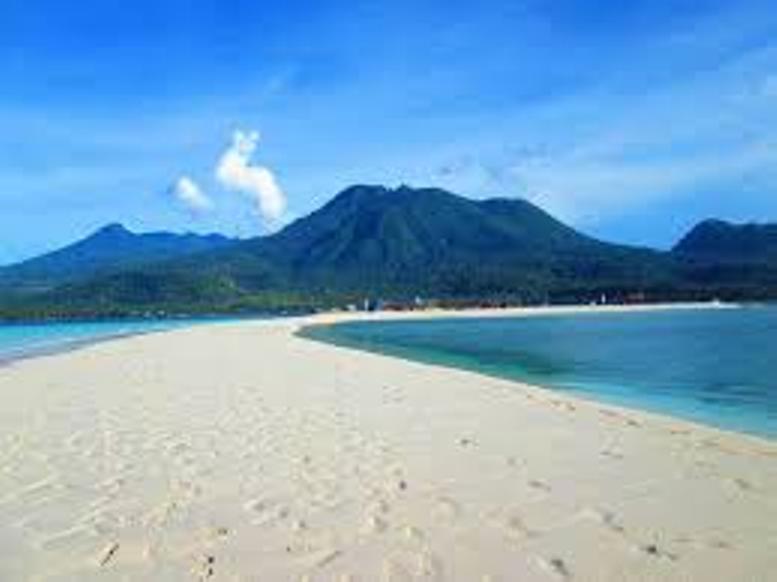
When I was a child, I said to myself, “If I should live the rest of my life, I wish I can spend it in a Paradise. I wish to live in Paradise.” This must be a dream but some dreams come true.
I am living in one of the most peaceful place in the world, the Island Province of Camiguin. My wish is no longer a wish but a reality. I live in a place which is almost a Paradise. I even call this place “Isla Paraiso” (Paradise Island). Why? It’s not just because of the natural beauty of the place but most of all because of the peaceful, hospitable, friendly and pious inhabitants of this island.
Many people knew about the Battle of Marawi in Mindanao, Philippines last year which lasted almost six months. This Marawi Siege frightened most of the visitors in Southern Philippines. They thought that Mindanao is a “warzone”. It’s not true that Mindanao is a “warzone”. Most of the places in Mindanao are peaceful. Peace reigns here especially in our Island Province of Camiguin.
In peace or in a global conflict, I think Camiguin is the best place to live. It is a safe place when there is no war. It is a safe place even during global war. When I asked a former military officer why Camiguin is a safer place during international conflicts, he answered, “It’s because there is no military arsenal here. No military airbase. No nuclear weapons.” It’s true. That is why I live here. That is why I enjoyed life here with my family.
Tourists who had visited our place said, “It’s almost Paradise.”
How I wish Steemians can visit our place, too!
The Top 10 Beautiful Spots in the Island Province of Camiguin.
- You will be attracted if you can see the WHITE ISLAND near Barangay Agoho in the town of Mambajao. This islet forms like a letter C. This letter C reminds visitors of Camiguin! Some local folks here said “Camiguin means Come Again.” In some sign boards in the island, you may read these words, “Thank you. Come Again.”
||I remembered Tay Beato (an old man and a World War 2 Veteran) told me, “The name Camiguin came from the word ‘Kamagong’ (a very strong tree also called “iron tree”).“ Kamagong branches were used by our ancestors as a weapon in the original Filipino martial arts called “Olisi” or “Kali”. These branches from Kamagong tree were called Kali, Olisi, Eskrima or Arnis. Some old men told me that the group of Lapu-lapu were trained here in Camiguin before they went back to Cebu (formerly Sugbo). On that bloody Battle of Mactan (April 27, 1521), Ferdinand Magellan was defeated by Lapu-lapu who used a stick (Arnis) from a branch of Kamagong tree. Decades after Lapu-lapu died and the Spaniards governed the country for more than 300 hundred years. The island which was called “Pulo sa Kamagong”(Kamagong Island) was named “Isla de Camiging”. When the Americans took over the Philippine government after they defeated the Spaniards in a battle, the name “Isla de Camiging” became “Camiguin Island”. Some details of this story are recorded in the Quarterly “Journal of Philippine Studies”. Our very own historian Vicente Elio y Sanchez wrote on the History of Camiguin in the said Journal in 1972.||
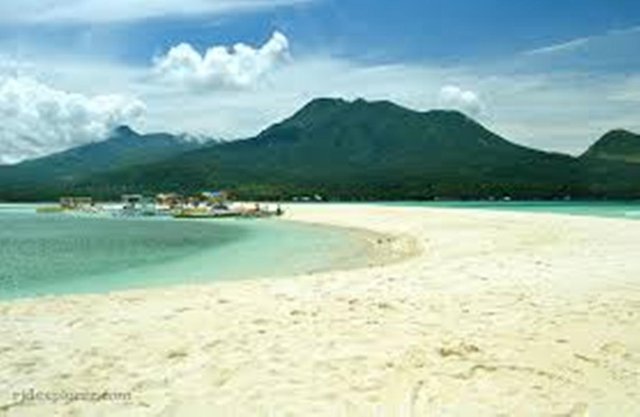
- We have also the MANTIGUE ISLAND. It is also an islet which is part of Camiguin Province. You can walk around this islet in just a few hours! And don’t think it is an empty islet. Unlike White Island, Mantigue has trees and houses. There are few inhabitants there who are very hospitable. Most of them are fishermen. They have their own families there who knew and understand English language like the rest of the inhabitants in this island Province.
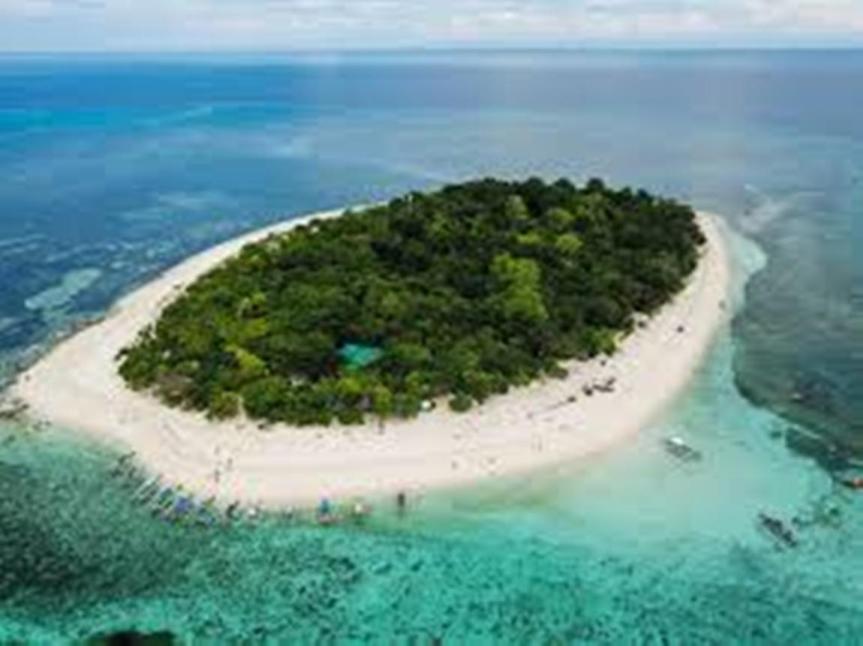
limage source
- KATIBAWASAN FALLS is just a few kilometers away from our house. It is a very beautiful falls. Many tourists like to go there and swim in the pool near the falls. People are forbidden to get near the drop point of water from the falls.
(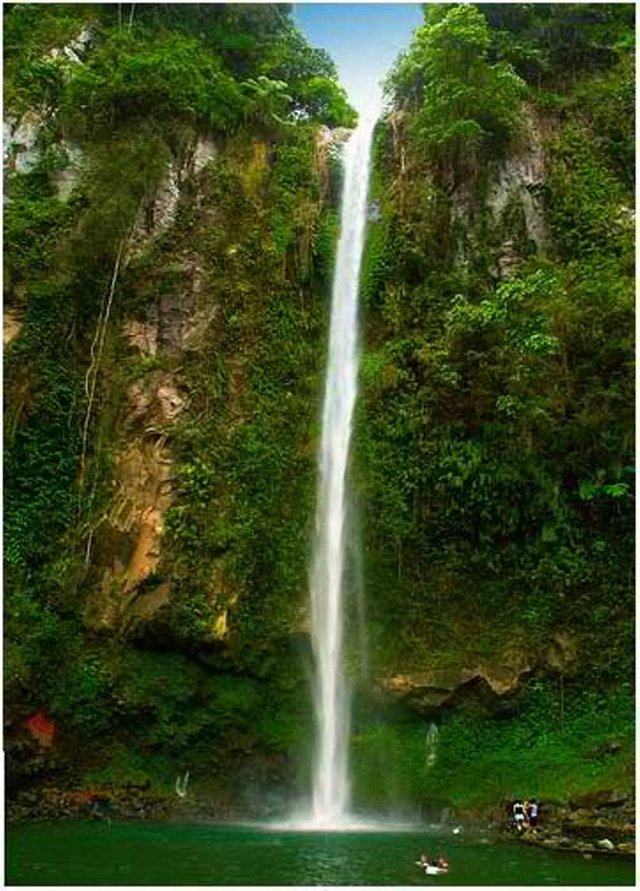 )
)
image sourcw
- SUNKEN CEMETERY is a graveyard beneath the sea. The graves sunk many years ago during volcanic eruption but don’t be afraid. Although we have 7 volcanoes in the island (and we have only 5 towns), there is a well-equipped observatory here placed by the PHILVOLCS (Philippine Institute of Volcanology and Seismology). Last year, I had a part time job at PHILVOLCS and I can assure you, our volcanoes won’t erupt without any prior notice from the office one month or more before the eruption. So, I do not worry about the safety of my loved-ones. These volcanoes here never erupted for more than 50 years. The former parish priest of Mambajao, Camiguin, Fr. Pedro Sombilon told a joke to the people before he left the place, “Do not worry about volcanoes here. I brought the switch with me. So, it won’t erupt!”
(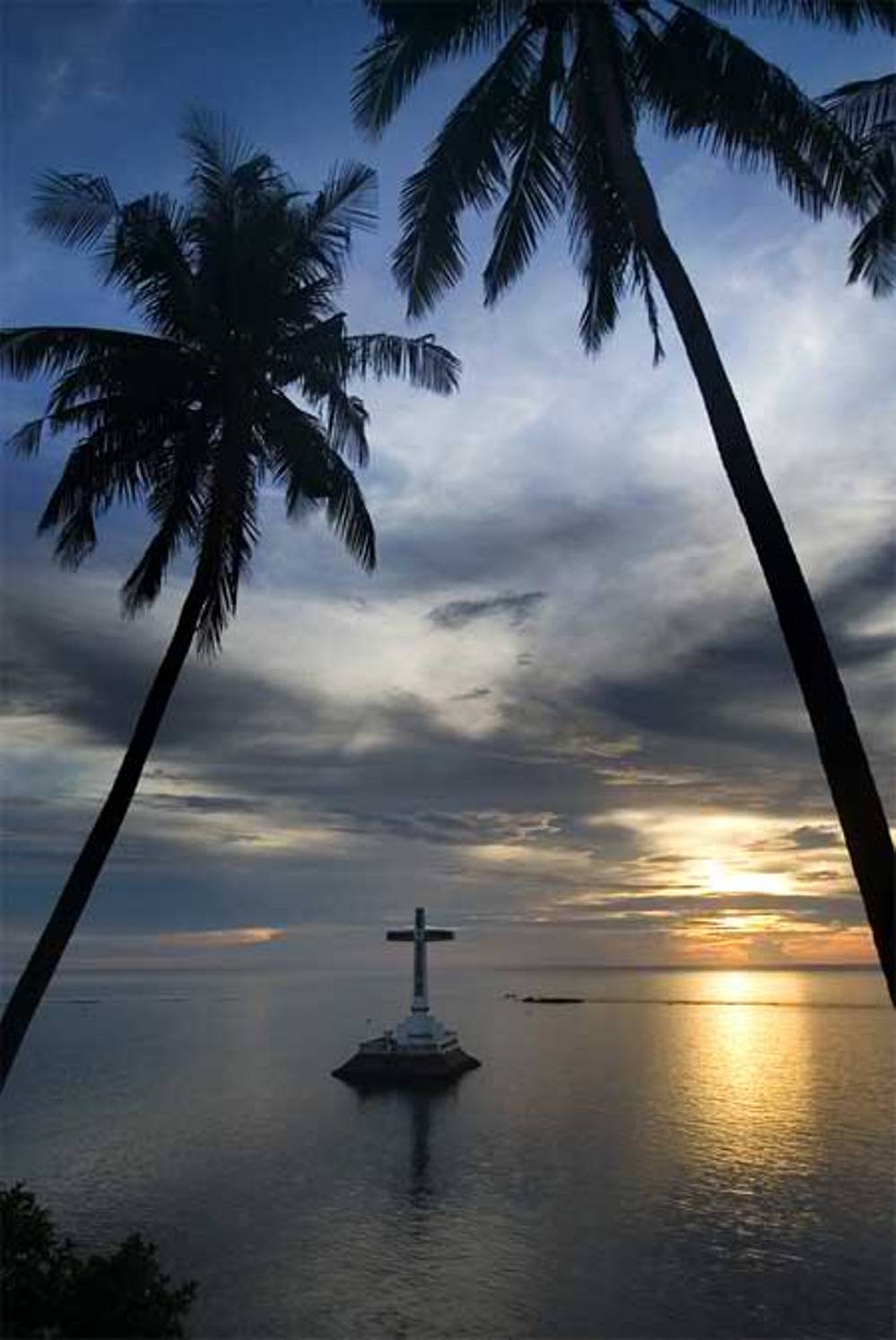 )
)
image source
- TUASAN FALLS like Katibawasan Falls also attracted many tourists. The new road that traversed Itum (a place near Hibokhibok volcano at the center of the island) connecting the towns of Mambajao and Catarman, is a shorter route from PHILVOLCS Observatory to Tuasan Falls.
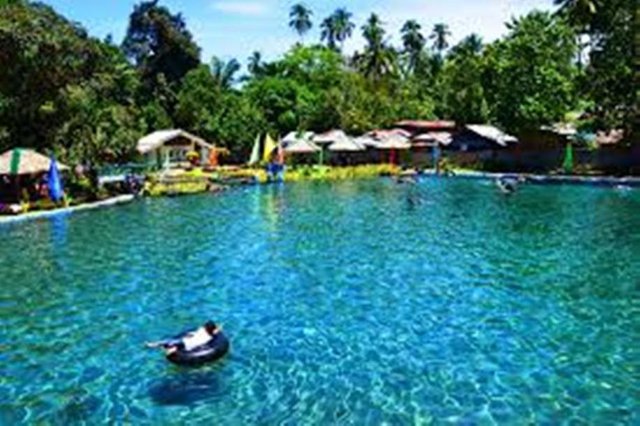
image source
- From Tuasan Falls tourists usually go to STO. NIÑO COLD SPRING as their next destination. This cold spring is surrounded by many cottages where visitors can stay for few hours while having their picnic.
![giant clams sanctuary of camiguin.jpg]
image source
GIANT CLAM SANCTUARY has many attractions, too. It has hundreds of giant clams. I saw these clams many times. I was there. While swimming using a snorkel, I saw also many kinds of fish and sea creatures.
(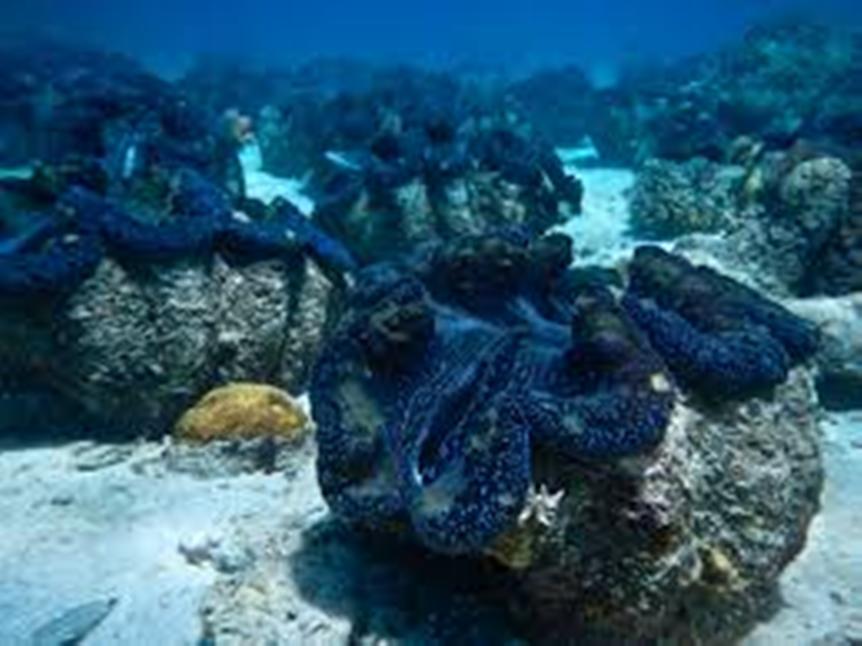 )
)
image sourceARDENT HOT SPRING is a good destination for those who like to take a bath at night time. The hot water from this spring can ease the pains in our body. Usually, during peak seasons such as Holy Week and Christmas, the pools in Ardent are filled with many tourists, local and foreign groups.
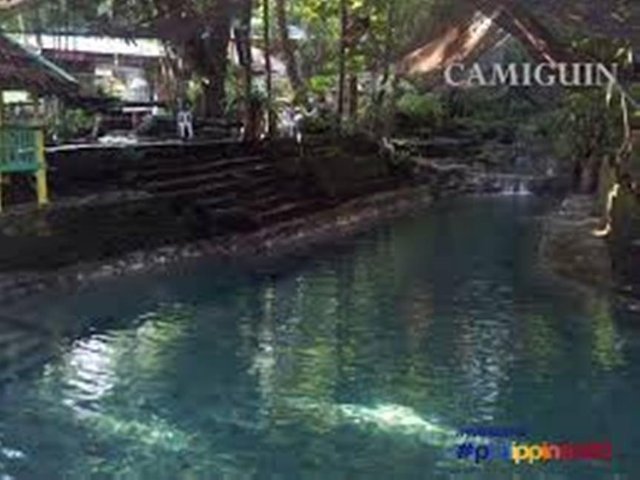
image sourceWALKWAY TO THE OLD VOLCANO AND STATIONS OF THE CROSS is a common sight for pilgrims who walk around the island during Holy Week. Almost a hundred thousand of pilgrims go to this place to fulfil their so-called “Panaad” (“a Solemn Promise” to God to renew our lifestyle and habits and go back to the Divine Will.). The place is located at the foot of the Old Volcano in Bonbon, Catarman, Camiguin.

image sourceGUIOB CHURCH RUINS (or OLD CHURCH RUINS) is also located in the same Barangay (Bonbon, Catarman, Camiguin). Guiob (name of Old Catarman) used to be the Capital Town of Camiguin during Spanish era. When the “Old Volcano” near the downtown area erupted, the Cemetery at Guiob sunk (became the famous Sunken Cemetery) and the Church Rectory (most people here call it “Convent”) with the parish church (the House of Worship) were destroyed.
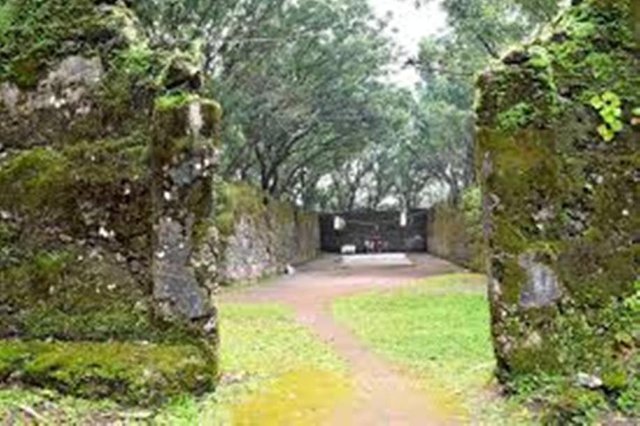
image source
Aside from these beautiful spots in our place, you can also experience the freshness of air at daytime or night time. Our environment has never been polluted by any kind of factory that the urban places have. You see green leaves of trees and plants, near and far. You can also see many kinds of flowers, birds and butterflies.
Our place is very different from those progressive cities of the Philippines. You cannot see the high buildings towering up in the skies but you can see Mt. Hibok-Hibok at a distance. This volcano is very famous and this is the reason why the Commission on Volcanology (ComVol) was established in the Philippines more than 50 years ago. The Philippine government set up a group of expert geologists after Mt. Hibok-hibok erupted in the 1950’s. This ComVol became what we know today as PHIVOLCS (Philippine Institue of Volcanology and Seismology). And before I forget, let me reassure you: our volcanoes won’t erupt without any prior notice from the office of PHIVOLCS one month or more before the eruption.
Camiguin is a very peaceful place. You can sleep in a house here without being disturbed by the noisy traffic. There is no traffic here during night time. Here in this island, there are no bandits, no rebels, no carnapping, no snatching of valuable things here and obviously no bombing. A visitor can sleep outside a cottage without being harassed by any ill motivated citizen. If someone commits a crime, he can be caught by the cops in less than a day because this is just a small island province. Some people call it “the Island of Your Imagination”. Some call it “the Island Born of Fire”. I call it ISLA PARAISO (Paradise Island).
This is our place. This is our home, the fulfilment of my dream. This is the Paradise Island Province of Camiguin, Northern Mindanao, Philippines.
Sources: HIstory of Camiguin by Vicente Elio Y Sanchez, Philippine Studies A Quarterly, Vol 20, First Quarter, 1972

@originalworks